Sustainable Living Needn’t Feel Overwhelming – 43 Ways to Incorporate Eco Practices Into Your Everyday
Let these tips from the top sustainability pros help.

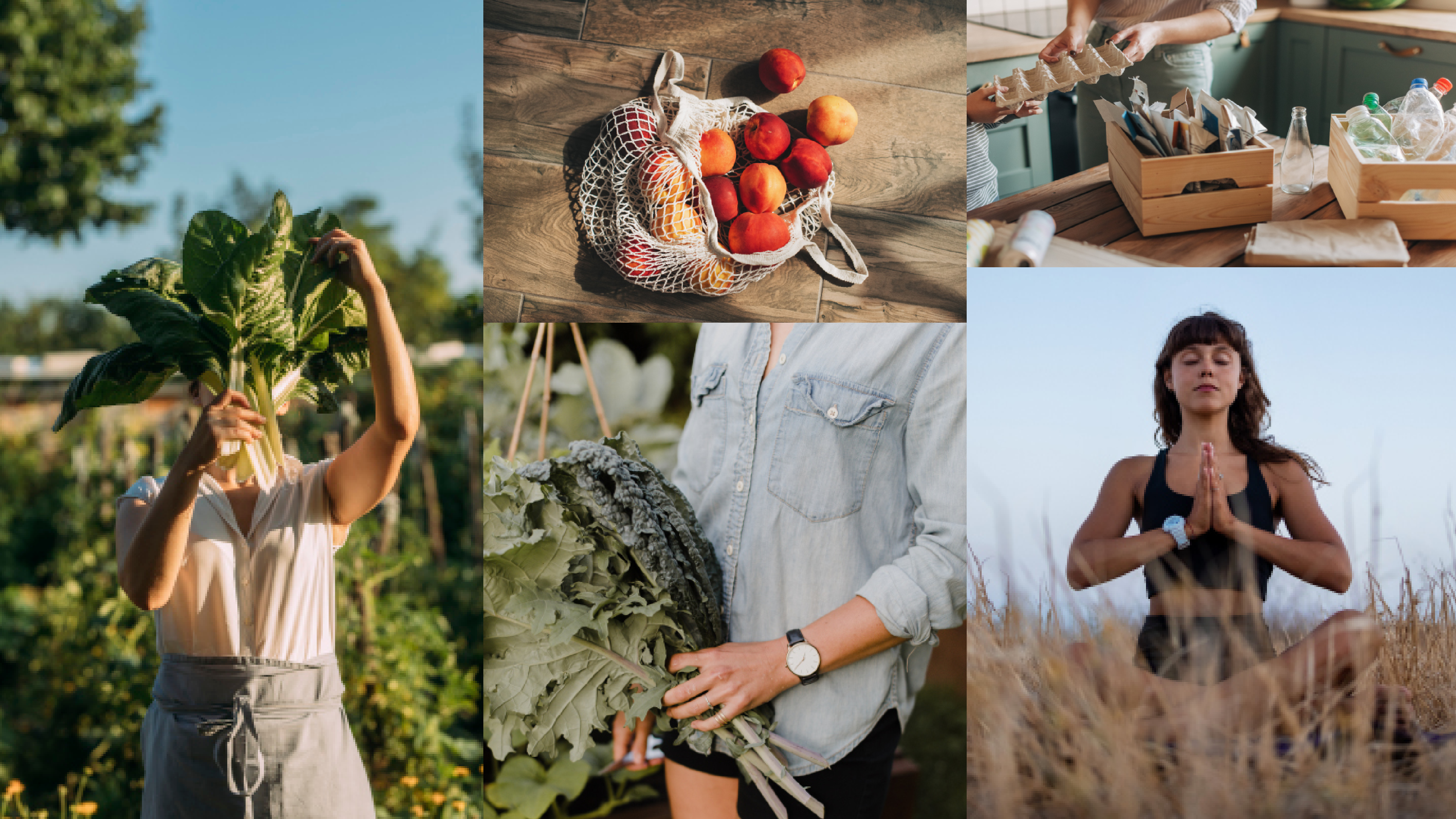
Keen to read up on how to adopt a more sustainable way of living? Then you're in the right place.
Taking the time to learn how to live sustainably and make your day-to-day life that little bit more eco-friendly is important, as the latest IPCC report showed. In short, we don’t have long left before the damage we’ve caused to our planet becomes irreversible - which is why, now more than ever, we all need to do our bit.
Sure, reducing your plastic usage is key, but so too is reading up on greenwashing, buying ethical fashion (not fast fashion) where possible, and investing in sustainable beauty products, too.
As actress and climate activist Bonnie Wright writes in her book, Go Gently, “The ice caps are not going to melt – they already are. Sea levels are not going to rise – they already are. This is why we need to take a crisis approach to the climate. Fossil fuel companies are not going to put the planet before profit – we as compassionate earthlings need to do that. The time to join this movement and educate ourselves on how to best take action is now.”
While you might be moving towards living plastic-free, reducing your food waste, and countering your carbon footprint, can you honestly say you know the definition of sustainable living? And do you really know how to be more sustainable day-to-day or the simple ways you can make sure you're not leaving a lasting and irreversible mark on our planet?
We've spoken to fifteen of the most well-respected experts in the industry to bring you their complete guide to sustainable living. Do scroll for all the eco-definitions to educate yourself with, as well as forty top tips from various renowned sustainability experts.
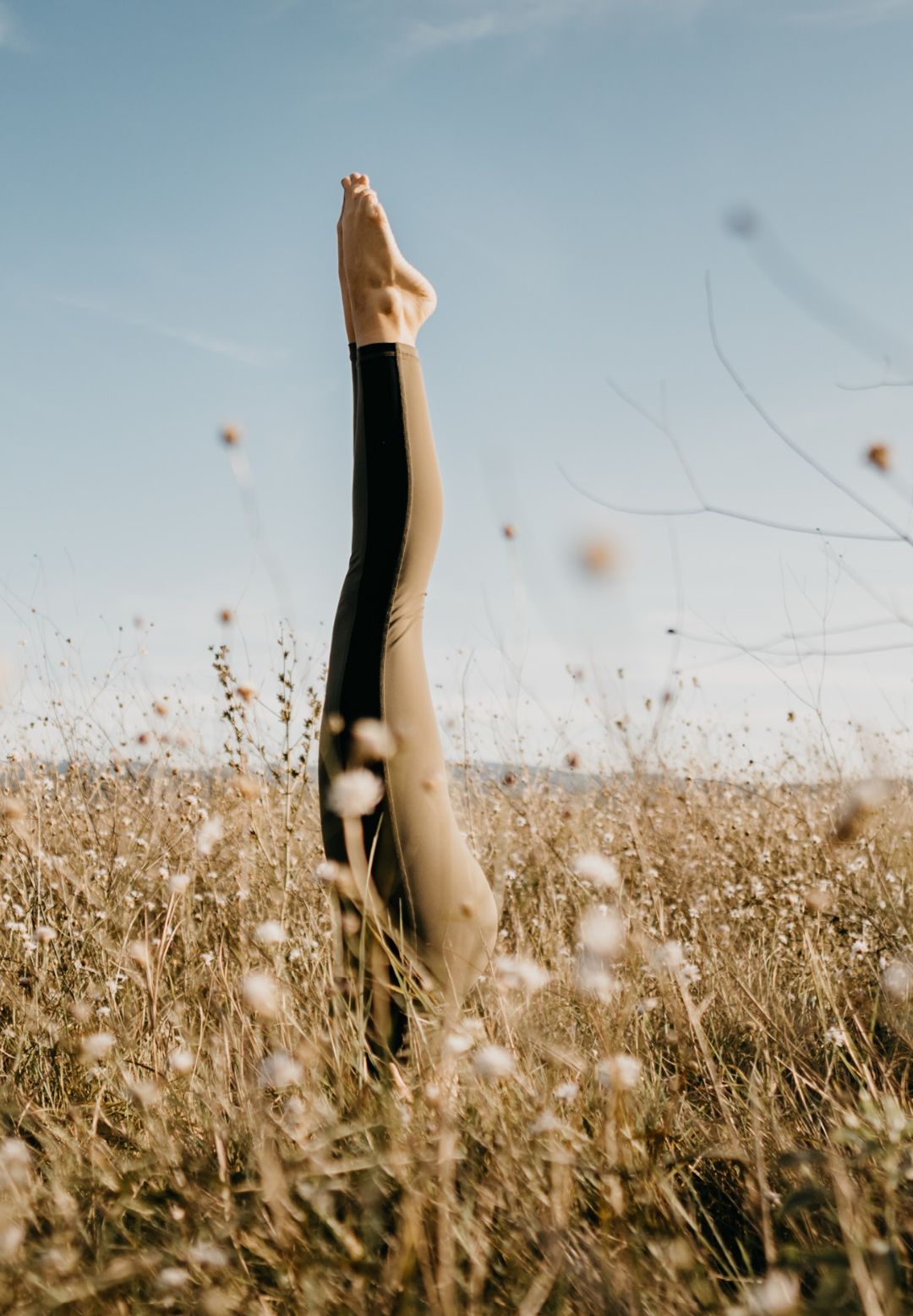
What is the definition of sustainable living?
At its core, sustainability is about meeting our present needs without compromising the needs of future generations, explains Damian Soong, CEO and co-founder of certified B-Corp Form Nutrition.
"While historically sustainability has focused on environmental impact, sustainability is now a broader church, encompassing not just the environment but social and economic issues," he shares.
Not sure what this means? Sustainability once meant taking public transport rather than driving to work, and packing a plant-based lunch rather than buying a plastic-wrapped sandwich. Now, it requires this and more: think shopping at brands going the extra mile to do their bit, investing with banks that support eco-ventures, and calling for big corporations to do better.

Dr Rima Trofimovaite, interim head of certification at Planet Mark, agrees, sharing that sustainable living simply means reducing the amount of the Earth’s resources you use in order to protect it. Do note, though, that it doesn’t mean that you must live uncomfortably - quite the opposite. "There are now plenty of alternatives and options that make a sustainable lifestyle not just accessible, but also one that promotes financial and health benefits," she explains.
Clare McDermott, Soil Association’s business development director, further adds that living sustainably is about working with nature - not against it. "It's about operating with care, consideration and knowledge so we don’t deplete natural resources," she shares.
Why is sustainable living so important?
Because as our article on the latest IPCC report highlighted, the next seven years are the last chance we have to reduce climate change before the damage becomes irreversible. UN secretary general António Guterres called it a “final warning” as the authors of the report have warned that it's the last report that can feasibly be delivered before we pass the 1.5C Paris Agreement global warming cap.
As Doctor Rima explains, the United Nations has referred to the period between 2020 to 2030 as the "decade of action."
"What we do in these ten years will determine the course of humanity," she shares. "Our economic and social progress over the last 100 years has resulted in climate change that is endangering the very systems on which our future development – indeed, our very survival – depends."
Rather than feel overwhelmed, educate yourself on the easiest ways you can make a change in your day-to-day.
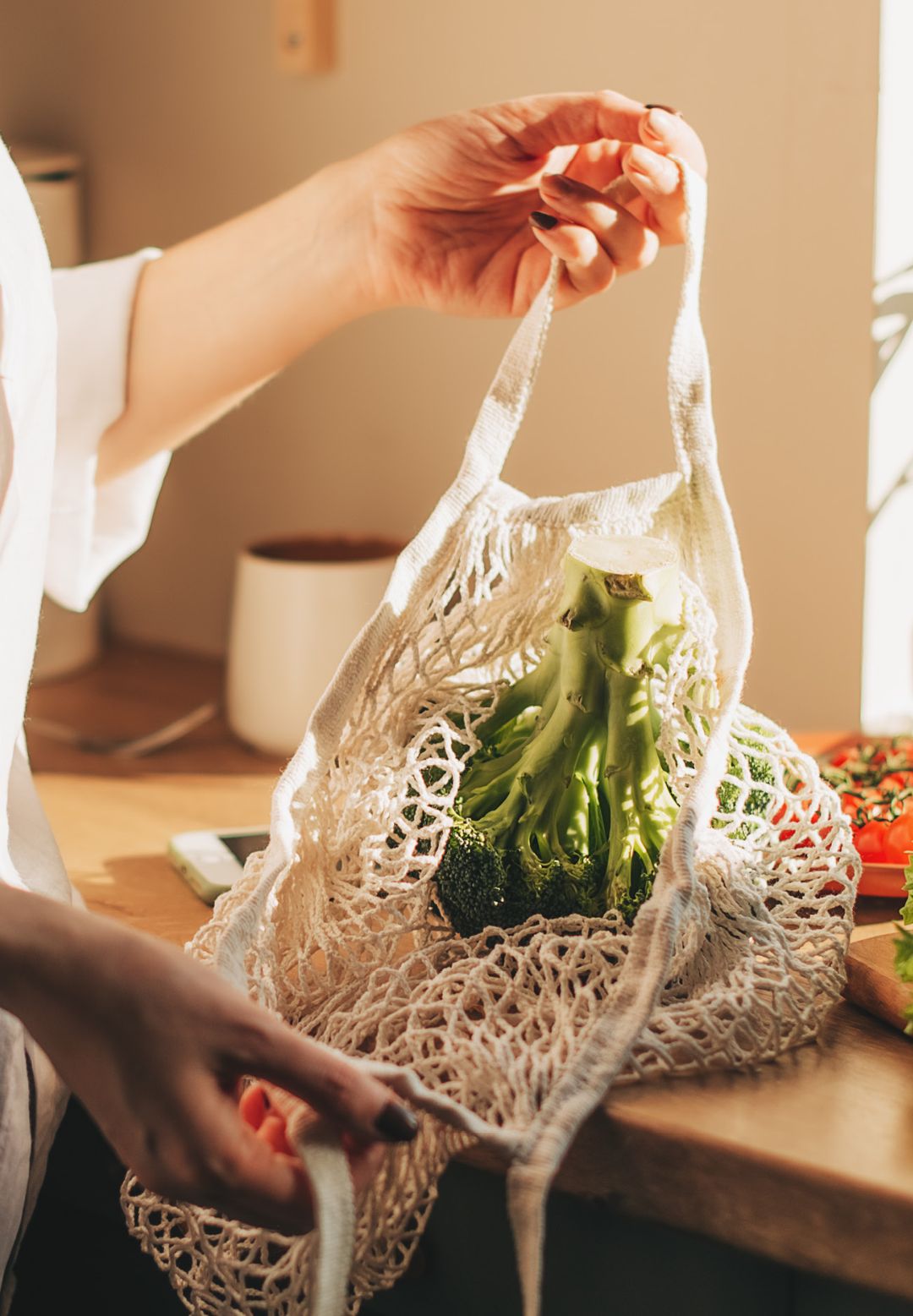
How do I eat more sustainably?
1. Consume more plants
That is, eat more fruits, vegetables, beans, peas, nuts and seeds. You all know they're good for you, but they're also really good for the planet, shares doctor Lawrence Haddad, executive director of the Global Alliance for Improved Nutrition (GAIN) and chair of the UN Food Systems Summit Action Track 1.
"Both fruit and veg provide great sources of fibre, vitamins, minerals and many other things that help promote health, plus, they have a relatively small greenhouse gas and carbon footprint," shares the doctor.
2. Opt for food variety
The greater the variety of foods on your plate, the more sustainable your diet. Why? Well, as Doctor Haddad explains, "the wider the range of foods farmers grow, the wider variety of life the planet supports."
3. Aim for smaller portions
Why? Well, it minimises the potential risk of food waste and generally uses less, Doctor Haddad explains. "Being mindful of portion size is good for your budget, waistline, and for the planet’s resources," he shares.
4. Buy fewer highly processed foods
"This includes processed meats," Doctor Haddad says. Why? Well, from a sustainability perspective, processing food uses valuable energy, and their cardboard and plastic packaging creates waste.
Of all animal products, foods like meat, fish and dairy should be enjoyed little and often. "Foods from animals are important for rapidly growing children and adolescents, but in moderation," explains Doctor Haddad. He advises that you eat processed meats, such as salami and sausages, even less frequently: simply put, "they're not great for your health or the planet," he shares.
5. Reduce your waste
If you're striving for sustainable living, wasting as little food as possible is key - our guide to the best food waste apps may help.
"It’s hard sometimes not to waste food, but composting helps," doctor Haddad explains. "You can buy an internal compost bin for around £20 or even make your own. This is great not only for minimising waste, but helping return nutrients to the soil," he explains.
6. Try plant-based
We all know that the processing of animal products - red meat in particular - is one of the worst offenders when it comes to omitting harmful CO2 emissions.
One way to help? “We can make positive changes by favouring plant-based foods over animal-based foods. Eating a diet full of a range of fruit, veg, wholegrains, nuts and legumes is a great way to ensure you’re eating in a healthy and climate-friendly way," explains Doctor Marta Antonelli, research director of Barilla Foundation, which carried out the SU-EATABLE LIFE Project to encourage EU citizens to adopt a healthier and more sustainable diet.
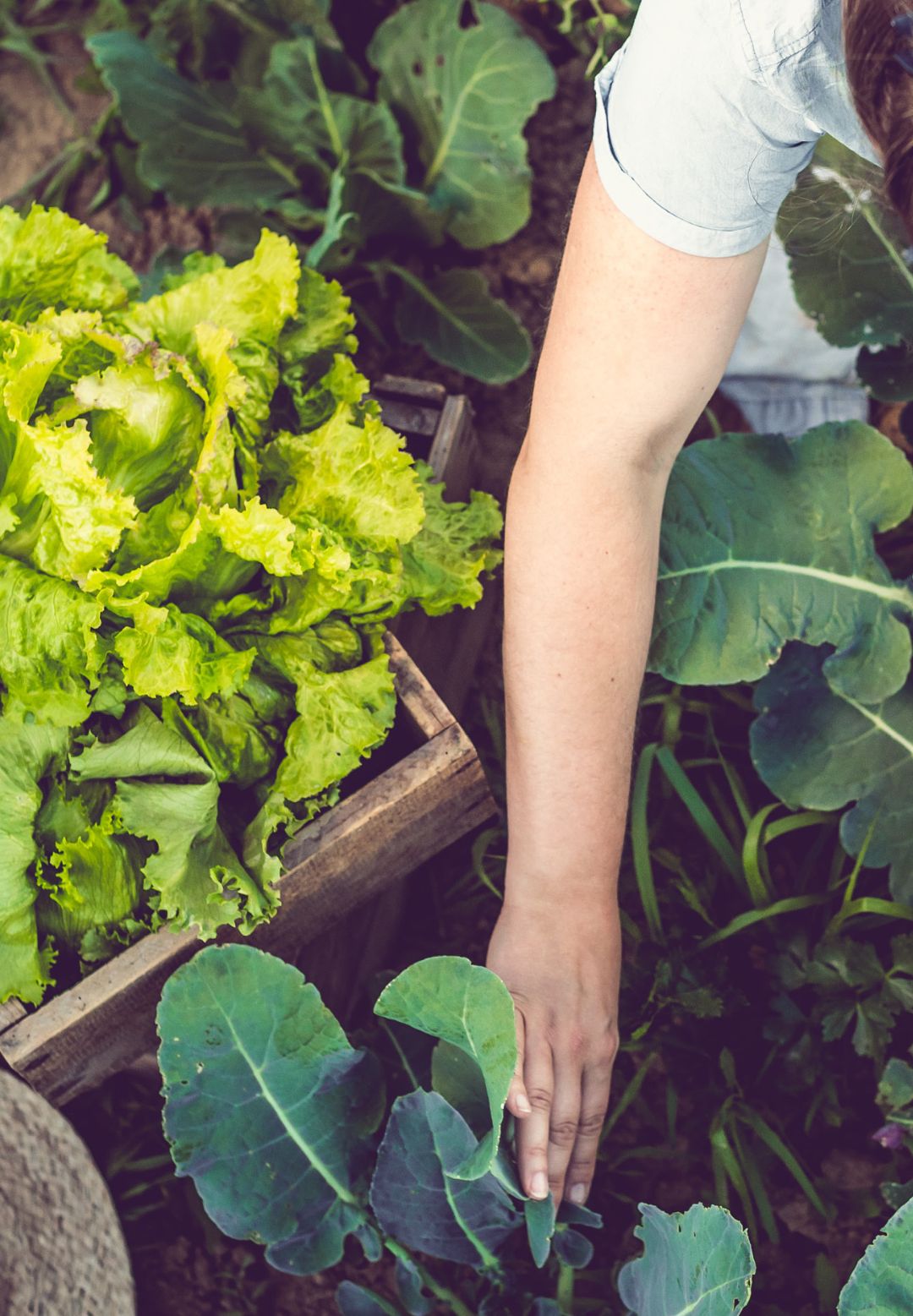
7. See red meat as a treat
Spotting a recurring theme here already? If you're keen to move towards sustainable living, opt for no more than one portion of red meat a week, advises Doctor Antonelli.
8. Don't overlook plant protein
You often hear people saying that they can't go plant based as they won't get enough protein. But Antonelli wants you to know that there are loads of great sources of plant protein.
"You probably already eat them," she explains. "Think beans, lentils, peas and legumes, like chickpeas."
Not only are they versatile, but they're sustainable. Married to your Sunday roast or such a fan of salmon you can't see it go? Don't worry - every little helps. "Among animal-based food, poultry and fish have a lower impact on the planet than red meat, meaning you can eat them up to three times a week and still be doing your bit for the environment," explains the doctor. Aim to eat eggs and cheese no more than twice a week.
9. Educate yourself on vegan cooking
Sure, veganism might sound totally overwhelming, but if you invest in some good cookbooks and really throw yourself in to the challenge, you'll find sustainable living isn't that complex. Why? Because you'll discover the tasty plant-based meals you love in no time. Plus, you don't need to go 100% vegan to eat sustainably - as above, every little helps.
"Indulge yourself with herbs and spices, and explore the full range of available veg, legumes and whole grains," doctor Antonelli advises. "Boost your soup and salads with seeds and nuts, and opt for vegetable oil when cooking," she shares. Got it?
10. Consider your dairy intake
Did you know? It takes 1,020 litres of water to produce one litre of cow’s milk, shares Siobhan Dolan from vegan charity Viva!. To produce the same amount of soya milk, you need 297 litres of water, and even less for other crops such as oats.
"Switching dairy for a plant-based alternative will significantly reduce your carbon footprint," she adds.
A post shared by Soil Association (@soilassociation)
A photo posted by on
11. Find fish alternatives
The fishing industry is often an area that often gets overlooked when it comes to sustainability, the expert shares.
"Our oceans are on the brink of collapse as a direct result of overfishing and it’s not just fish such as cod who are at risk of extinction. Dolphins, whales and sea turtles are just a few examples of creatures who are considered ‘by-catch’ by the fishing industry, and die from asphyxiation only to be thrown back into the oceans," she explains.
Top tip: try mixing tinned chickpeas with veganmayo for a tasty tuna mayo alternative or battered tofu in place of cod.
12. Try plastic-free recipes
Going 100% plastic-free may seem overwhelming for some.
"Fortunately, there are a surprising amount of supermarket products that are plastic-free," shares Dolan. "Try opt for tinned items like beans, tomatoes, pulses, loose vegetables, plant-milks and items in paper bags, such as oats and some cereals. Even better, try your local green grocer as many sell loose vegetables and fruit," shares Dolan.
Or, go one step further and try shop at plastic-free shops. "They've appeared in most major towns, making it easier than ever to try plastic-free," she explains.
13. Grow your own food
One thing the pandemic inspired, alongside sourdough starters, paint by number and banana bread? A whole new wave of gardeners - which was great news for the planet.
"Growing your own food provides you with organic locally grown produce," shares Dolan. Some charities are even offering incentives to gardeners - that is, they'll help support you to grow specific pollinator-attracting plants. These are supporting the declining bee population.
14. Choose organic
So, you've opted for plastic-free produce where possible, planted up your garden with bee friendly plants and upped your plant-based recipe repertoire. Next up? It's time to go organic.
"Organic is better for the planet as it’s designed to respect nature and to enhance the health of soils, water and air," explains McDermott, the Soil Association expert who helped to define sustainability in the intro. "Organic farming is leading the way on sustainability, avoiding harmful pesticides and artificial fertilisers, and promoting better welfare for farm animals and wildlife," she shares.
15. Connect with nature
This one shouldn't come as a surprise - if you're living sustainably, you'll want to be eating seasonally, observing where food comes from, and respecting why that process causing minimal environmental damage is important.
"Organic is all about harnessing the incredible power of nature, so reconnecting to the everyday wonders of the natural world is an important step in reconnecting with where our food comes from," explains McDermott. This applies to both food and life - whether it’s a weekend walk amongst the trees or a foraging expedition, building an insect hotel with the kids in your garden, or taking the scenic route to work, she advises getting back to your roots and start sharing in the joy of nature.
16. Support your local organic farmers
Why not order a local, organic veg box? Or find an organic home food delivery option?
"There's so many benefits to subscribing to a fruit, veg or meat box," explains McDermott. "You'll be joining a community of amazing citizens, farmers and organisations who are making sure the way we farm and eat is better for our health, better for nature and wildlife, and better for the climate, too."
Not sure where to start? The Soil Association website has a handy feature which helps you find an organic veg box near you.
A post shared by B Corporation UK (@bcorpuk)
A photo posted by on
17. Choose products from certified B Corporations
You'll have heard the term greenwashing, but do you know what it means?
"As sustainability has sadly evolved, sadly so have the marketing buzzwords around it," explains Soong. "Many brands are pushing sustainability without doing their due diligence. Take sustainable fashion collections using recycled cotton, but then blending it with unsustainable polyester."
Soong advises that you shop with brands that have a B Corporation certification - if you're not sure what that it is, their website defines it as the following: "Certified B Corporations are businesses that meet the highest standards of verified social and environmental performance, public transparency, and legal accountability to balance profit and purpose."
To discover which brands are B-Corps, you can search the B-Corp directory on their site.
18. Build a compost heap
Another top tip from Damian? Try your hand at building a compost heap, advises the CEO.
"You’d be surprised by the amount of things you’d usually just chuck away that can actually be used to help feed your garden plants," he shares. "Take our compostable packaging, for example," he says. You can also use old milk bottles, egg cartons and wine bottles - get creative.
19. Say no to palm oil
Soong's last tip? Try and avoid palm oil, where possible. "It's an edible vegetable oil that comes from the fruit of oil palm trees and is a major driver of deforestation," he shares.
Sadly, it’s in close to 50% of the packaged products you find in supermarkets. "It's destroying the habitat of already endangered species like the Orangutan, the pygmy elephant, and the Sumatran rhino," he explains.
How do I improve my sustainable beauty game?

20. Opt for organic bathroom products, where possible
Did you know? There's so much more to organic than just food and drink, or so says McDermott.
"Look out for the Soil Association symbol on beauty and wellbeing products to be sure you're supporting businesses that don't test on animals, or use controversial chemicals, parabens, phthalates, synthetic dyes or fragrances," she advises.
Again, if you're feeling at a bit of a loss, our guides to how to recycle your beauty products, the best refillable beauty products and how to make your beauty routine more eco-friendly are here to help.
21. Opt for vegan supplements
Researchers from Oxford University found that the average meat-eater has a global warming footprint that is almost double that of an average vegetarian, and 2.5 times that of a vegan, shares Soong.
This doesn't just apply to food, but our supplements, too. If you're a protein powder user, opt for vegan protein powder, where possible, and make sure your beauty supplements aren't using animal products, like gelatin, either.
Sustainable living spans food, beauty, fashion, and, well, our whole lives. Top line: make small changes where you can.
22. Restrict your water usage
Guilty of leaving the tap running while you're cleansing your face or turning the shower on five mintues early to warm up? Sustainable living wise, that's a no-no.
"Don’t leave a tap running when not in use," shares Soong. It's wasteful, and water is a finite - not to mention scarce - resource we all need to survive.
Other water-saving tips include:
- Be mindful of how often you wash your clothes
- Build smart drainage solutions in your garden - that way, you don’t need to be constantly watering your plants.
- Don't throw water down the sink.
How do I make sure I'm investing in sustainable fashion?
23. Say no to plastic
It's the simple things that make a difference. Try not to buy from brands that wrap their products - whether that's clothes, jewellery, food or other - in plastic, shares Natalie Glaze, founder of sustainable jewellery brand By Glaze and co-founder of sustainable swimwear brand Stay Wild Swim.
24. Bring reusable bags to your shopping trips
Again, such a simple switch, but one that can make all the difference, Glaze shares.
"Invest in a bag for life or a couple of tote bags for your shops. Not only is it a simple swap to save the environment, but it’ll also save you the pennies in the long run with most high street shops charging 5p per bag now," she explains.
25. Invest in reusable bottles and coffee cups
You'll likely have heard this a lot, but investing in a reusable coffee cup and water bottle is another very basic way you can lead a more sustainable life.
"If you already own them, do try and remember to bring it with you whenever you head out," encourages Glaze. "You never know when you’ll get thirsty on the go."
26. Extend the life of your clothing
Fun fact: by doubling the life of your clothing from just one to two years and opting for more sustainable fashion, you can help reduce emissions from clothing production and disposal by as much as 24%, Glaze explains.
"Instead of throwing out your old or broken clothes, try alternative options," she advises. Like?
- Repairing broken clothes
- Upcycling items you no longer wear
- Swapping clothes with friends or selling second hand clothes online
- Buying vintage clothes, rather than new items
- Renting, rather than buying, clothes
- Donating unwanted clothes to charity
- Sending them on to recycling programs," she advises.
Glaze's company, Stay Wild Swim, has a Circularity Project that recycles your old, unwanted swimwear into eco-industrial products, keeping precious textiles out of landfill and back in circulation. Neat.
A post shared by Stay Wild® (@staywildswim)
A photo posted by on
27. Buy less but better
This is an ethos Glaze lives by day-to-day. "Instead of shopping for new pieces every season, invest in a few high quality items of clothing that you will love for years and years to come," she shares.
Let our guides to the best ethical clothing brands, sustainable swimwear and ethical jewellery brands help. Sustainable living never looked so simple.
28. Know your fabrics
When buying second hand isn’t the option, it’s good to arm yourself with the facts about which materials to go for when you do your shopping, Glaze shares.
"Some materials are better for the planet than others, such as econyl, which is made from regenerated ocean plastic, or tencel, which is derived from sustainable wood pulp. They're both certified biodegradable and compostable," she adds.
When looking at jewellery, do opt for recycled materials, where possible. "Recycled sterling silver is best for jewellery purchases," she shares.
29. Think about how you can put your wardrobe to work
Or so says Victoria Prew, founder of HURR dress rental service.
"Try and view your wardrobe as an investment and, ultimately, an asset you can monetise," she says. Before she ever makes a purchase, she considers the resale value and how many times she could rent it out, too.
Read our favourite clothes rental services and guide to how to shop second-hand, here.
30. Question yourself before you buy
Often find yourself browsing the 'New In' section of a clothes site? Prew's advice - stop and think before you buy.
Ask yourself the following.
- How often will you wear it?
- Is it a good investment?
- Will you get value for money?
- Do you really feel like you need it?
- Wait 30 days, and then go back to it and see if you really still need it. Do you really still love it?
This will eliminate impulse buying.
31. Consider investing in some made-to-order items
"Bespoke fashion is coming back into the mainstream," shares Prew. That is, tailor-made pieces are back, and set to be bigger than ever this year.
Businesses like Benjamin Fox and MaisonCléo use limited-stock fabrics, which is also a great way to live more sustainably. "It's a far more ethical and sustainable approach while reducing excess unwanted stock that would end up in landfill," she explains.
A post shared by HURR - Fashion’s Favourite Rental & Resale Platform (@hurr)
A photo posted by on
32. Repair, repair, repair
Haven't heard of them yet? Prew advises that you check out the Sojo app.
"It makes it easier than ever before to get your clothes repaired or tailored," she explains. Why is getting your clothes repaired important? Well, it reduces waste, stops clothes from ending up in landfill, and is also a great way to give your clothes a new lease of life, she shares.
33. Say no to fast fashion
Prew points out that fast fashion brands are already churning out summer looks.
Her more sustainable living suggestion? "Consider renting your revenge outfit on HURR instead. Look fabulous without a cost to the environment," she advises.
34. Challenge brands
So you're shopping less, investing more smartly and swapping old clothes for trendy, pre-loved treads. Next up? Taking things up a notch and starting to challenge the big organisations who could be doing level.
"Brands have a responsibility to provide clear and accurate information so we can make fully informed decisions," shares Charlotte Turner, head of sustainability, fashion and textiles at Eco-Age. "We need to get past the greenwashing and challenge brands to ensure they’re being accountable and honest," she shares.
A post shared by SOJO (@sojo.uk)
A photo posted by on
How do I make my period more sustainable?
35. Opt for reusable period products
One of the easiest ways we as women can move towards sustainable living? Have a more sustainable period by opting for reusable products. Brands like Thinx and Hanx make reusable underwear that has technology built inside to replaces pads and tampons.
"More than 12 billion pads and tampons are thrown out each year, with the average person with a period using more than 11,000 pads, tampons and panty-liners in their lifetime," explains Thinx CEO Maria Molland. That's roughly 275lbs of landfill pollution per person.
The Thinx website has a handy tool on their site called Know Your Flow which tells you how much waste you personally can save from landfills, based on your period.
How can I spend my money sustainably?
36. Make the effort to spend with sustainable businesses
This one may sound difficult, but more and more businesses are being transparent about their eco creds. And this is important.
Doctor Trofimovaite shares: "As consumers, we can make responsible and sustainable financial decisions that can drive change," she explains. "By looking out for ethical or sustainable labels when buying products, to supporting companies which have sustainable certifications, we can put sustainability at the forefront of our business agendas," she explains.
How can I make sure my pet is living sustainably, too?
37. Dispose of your pet’s waste responsibly
Ever thought about how much waste your pet is actually producing? Yep, we thought not.
Top tips from Dawn Howard, chief executive of the National Office of Animal Health (NOAH): "Always pick up any litter, use biodegradable bags, and bin the waste. Composting of pet waste is possible, but do your research first, especially if you are producing vegetables or fruit to eat."
She also recommends trying alternative cat litter to the traditional clay granules, such as wood shavings or recycled newspaper.
How do I make my home more sustainable?
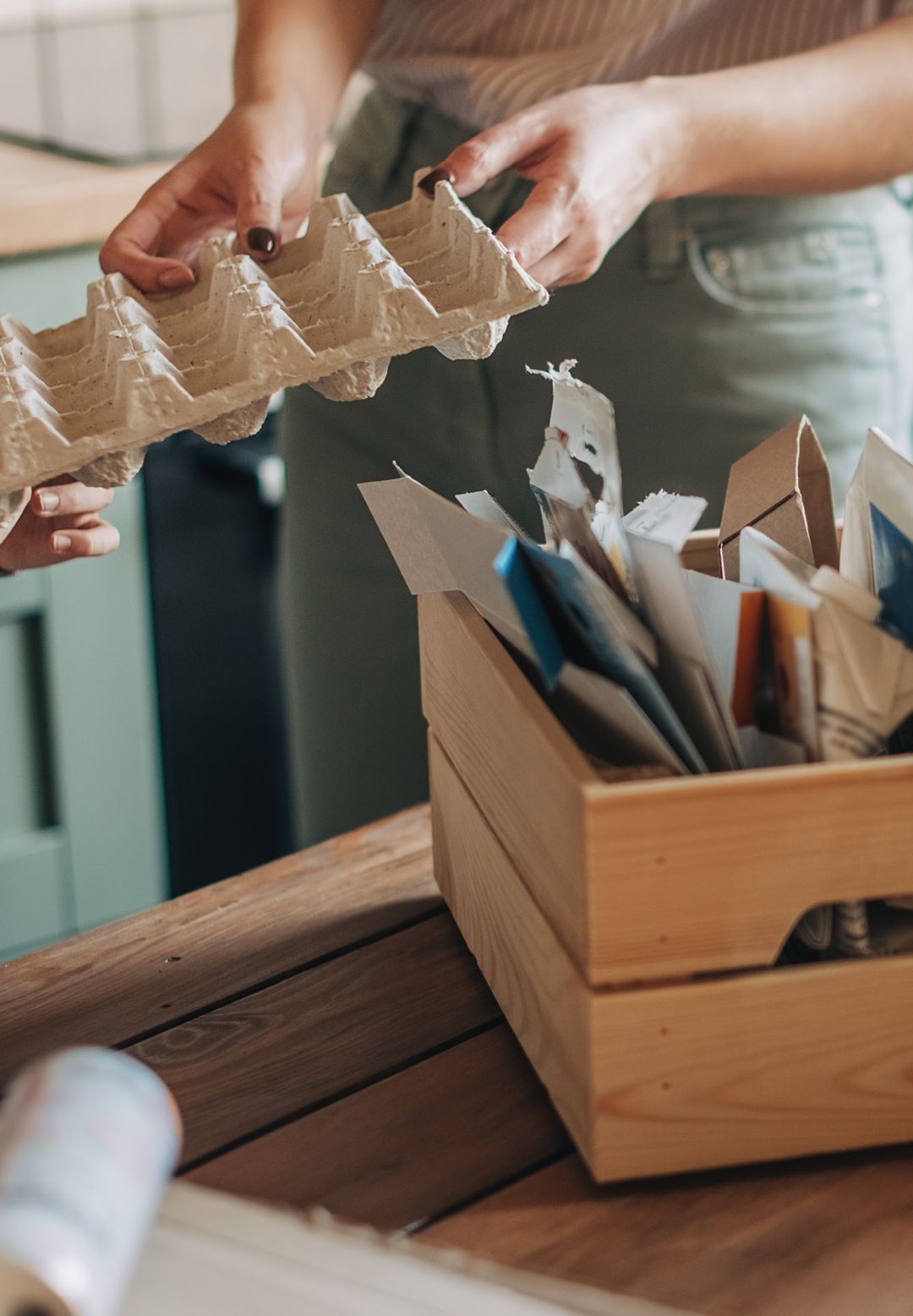
38. Insulate your house
First up, read our feature on how to build a green office, with all the tips you'll ever need to making your WFH set up a sustainable living space, too.
Then, consider how your home may be adding to the climate problem. "Buildings generate nearly 40% of global greenhouse gas emissions," shares Monica Mateo Garcia, lecturer in Built Environment at Birmingham City University.
"Insulate your house and draught-proof your windows and doors and you won’t just be saving money on your energy bills, but you will also help reduce your carbon emissions," she explains.
39. Buy some indoor plants
Eco-friendly and an easy way to spruce up your home. Winner, winner. Not sure where to shop? We've got you covered with our guide to the best indoor plants.
40. Reduce your carbon footprint
Did you know? Air pollution is the biggest environmental cause of premature death in the world. "Poor air quality has worse health effects in vulnerable groups, such as children," Mateo Garcia explains.
So, how can you help? Simply by reducing your carbon footprint. A simple way to do this includes reducing the use of your car for small journeys.
How do I encourage the government and others to act more sustainably?
41. Rally for change
As Dr David Santillo, senior scientist with Greenpeace Research Laboratories shares in Wright’s book, Go Gently, shares, the people who can make the biggest difference of all are governments and big corporations.
“We need to act by taking the arguments and the messages back to them and saying, ‘You need to do more; you need to set things up so that we can make the right choices’. Put pressure on your elected officials, put pressure on the retailers that you buy from. People can make themselves heard and make themselves difficult and not feel bad about doing that, because that’s the only way, in the end, that change is really driven through at some of these levels.”
42. Join a group
As Mikaela Loach, medic, climate justice advocate, co-host of the YIKES podcast and claimant on the Paid to Pollute court case explains in Go Gently, surrounding yourself with people who are also fighting for change is key. “Just join a group with other people,” she encourages. “So often we can get in our own heads about change and making change and action, and make it all about us, and what can we do alone.”
But in reality, when you join a community with other people, you’ll realise you’re in it together. “When you connect to other people, you realise that not only are you not alone, but also when you work for people, when you’re with other people, you learn so much more,” she adds.
43. Don't sit on it
And finally, one piece of advice that Manju Kumar, urban farmer and president of Brush with Bamboo shares in Go Gently? “After you read this, make sure you don’t sit on the information,” she advises.
“It’s only when we start working through the information and actually have faith in ourselves that we can do this. Read, and then think of what steps you can take to start the journey towards revitalisation, healing, and renewal," she shares.
And there you have it - forty three simple ways to move towards sustainable living, with help from the best experts in the business.
Celebrity news, beauty, fashion advice, and fascinating features, delivered straight to your inbox!

Ally is Marie Claire UK's Senior Health and Sustainability Editor, a well-regarded wellness expert, ten-time marathoner, and Boston Qualifying runner.
Utilising her impressive skillset and exceptional quality of writing, she pens investigative, review and first-person pieces that consistently demonstrate flair and originality.
As well as writing, Ally manages a team of freelancers, oversees all commissioning and strategy for her pillars, and spearheads the brand's annual Women in Sport covers, interviewing and shooting the likes of Mary Earps, Millie Bright, and Ilona Maher. Shortlisted for three BSMEs and winning one in 2022, Ally lives and breathes her verticals: her eye for a story and connections within the wellness sphere are unrivalled. Follow Ally on Instagram for more.